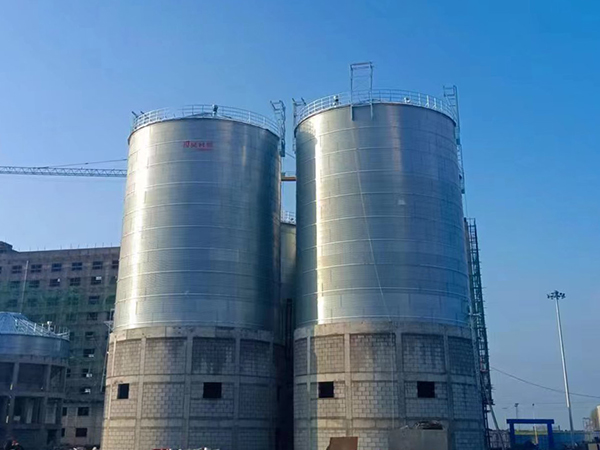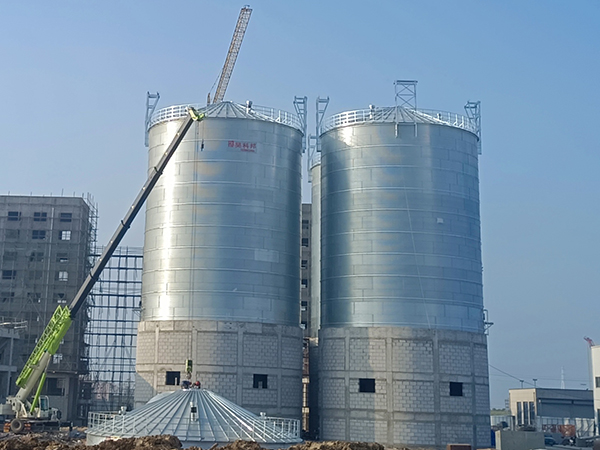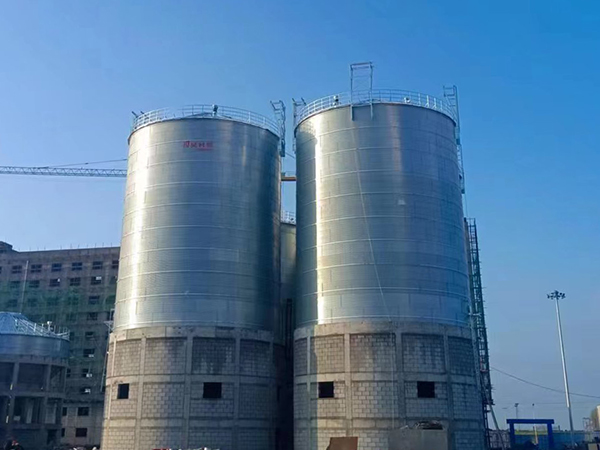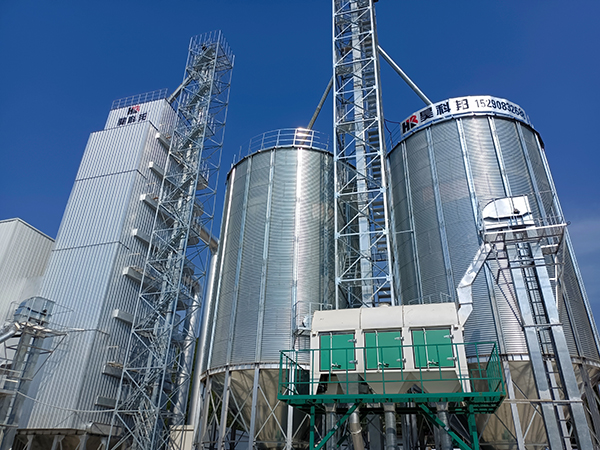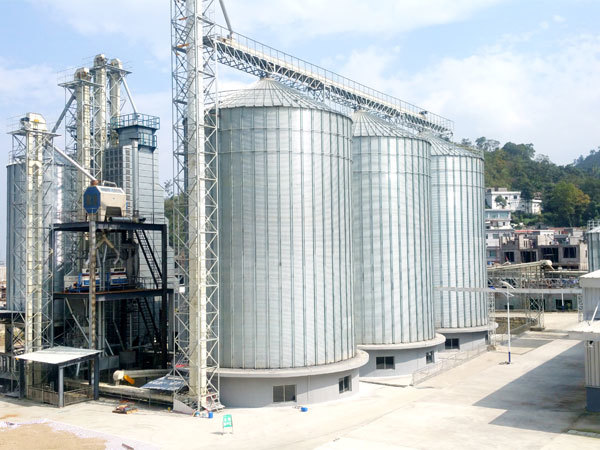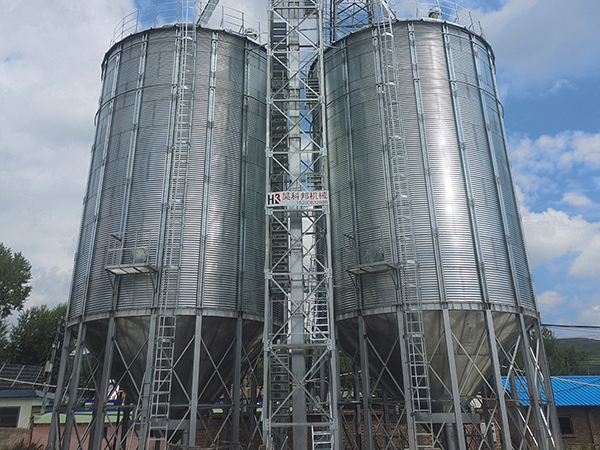Key characteristics of low-cost silos include
Simple Structural Design
Low-cost silos often utilize straightforward structural designs, such as flat-bottom, cylindrical, or square, to reduce construction expenses.
Inexpensive Materials
To keep costs down, low-cost silos commonly utilize affordable materials like ordinary steel sheets, concrete, or bricks.
Basic Grain Storage Functions
While they may lack some advanced features like automatic unloading or temperature control, low-cost silos still provide essential grain storage functionalities such as moisture and pest resistance.
Suitability for Small to Medium-Scale Farmers
Due to their affordability, low-cost silos are often suitable for small to medium-scale farmers or regions with limited resources, helping them address their grain storage needs.
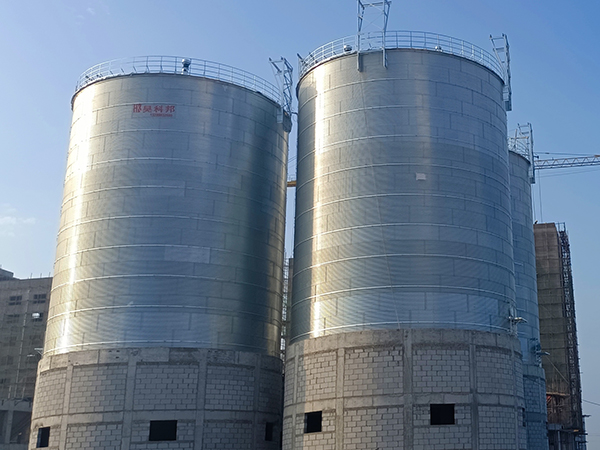
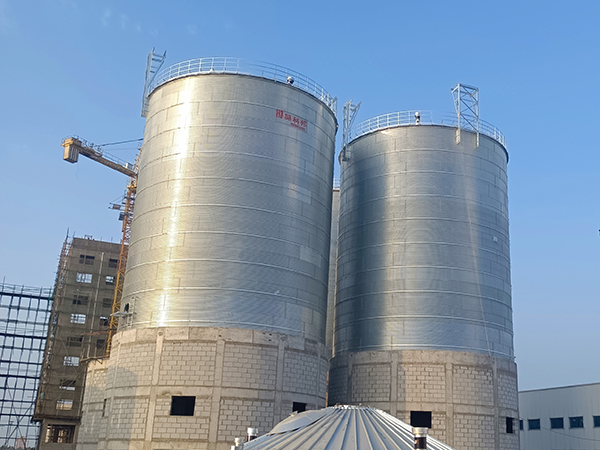
Structural design of low-cost silo
Basic Shape
Low-cost silos often have a simple shape, such as cylindrical or rectangular, to minimize construction complexity and material usage.
Material Selection
Inexpensive materials like corrugated steel sheets, concrete blocks, or bricks are commonly used for construction to keep costs low. These materials provide sufficient strength and durability for basic grain storage needs.
Foundations
Foundations are typically straightforward, with options like concrete pads or shallow footings, depending on the soil conditions and structural requirements.
Roof and Coverings
The roof structure is usually simple, employing materials like corrugated metal sheets or tarpaulins to protect the stored grain from moisture and environmental elements.
Access and Ventilation
Low-cost silos may feature basic access points such as hatches or doors for loading and unloading, as well as ventilation openings to ensure airflow and prevent moisture buildup inside the silo.
Minimal Additional Features
To maintain affordability, low-cost silos often forgo additional features like automated unloading systems, temperature control mechanisms, or sophisticated monitoring equipment commonly found in more expensive silo designs.
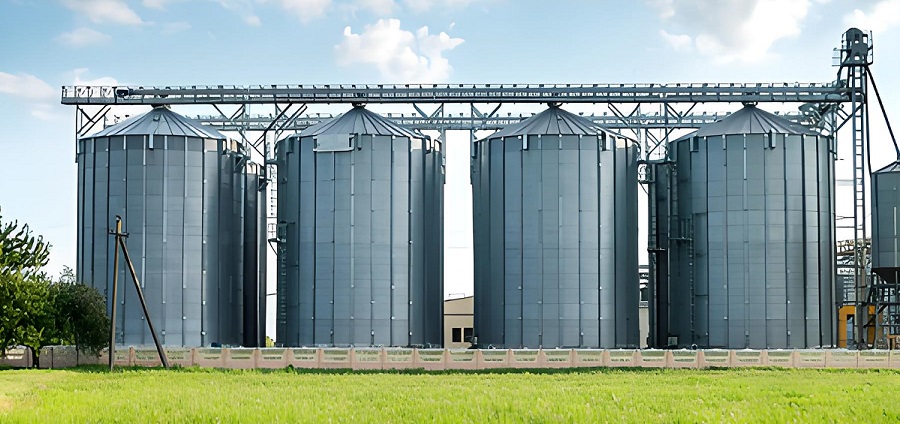
Advantages of low-cost silo
Affordability
Perhaps the most significant advantage, low-cost silos are economical to construct and maintain, making them accessible to farmers with limited budgets or resources.
Basic Functionality
Despite their lower cost, low-cost silos still offer essential functionality for grain storage, providing protection against moisture, pests, and other environmental factors that can degrade stored grains.
Customizability
Low-cost silos can be tailored to meet specific storage needs and preferences, allowing farmers to choose the size, shape, and features that best suit their requirements without incurring excessive costs.
Quick Construction
Simplified structural designs and the use of affordable materials enable faster construction times, allowing farmers to set up storage facilities quickly and efficiently.
Flexibility
Low-cost silos are suitable for various grains and crops, offering versatility in storing different types of agricultural produce.
Accessibility
By lowering the barrier to entry for grain storage facilities, low-cost silos empower small-scale farmers and rural communities to better manage their harvests, reduce post-harvest losses, and improve food security.
Community Impact
Investing in low-cost silos can have broader positive effects on local economies and communities by supporting agricultural productivity, income generation, and food preservation efforts.
Application scope of low cost silo
Coban steel silo is widely used for grain storage such as wheat, corn, soybean, paddy, rice, soybean meal, barley, malt, sunflower seeds, rapeseed, peanuts, flour, and other powder materials, oat, special Silo, and seeds, etc. Steel silo products include 100 ton, 300 ton, 500 ton, 1000 ton, 2000 ton, 3000 ton, 5000 ton and 10000 ton steel silo as well as metal silo, spiral silo and galvanized silo.

low cost silo technical parameters
Scientifically speaking, the Silo capacity should be measured with volume (m3). Even in the same grain Silo, the storage tons will be different for different grains with different densities. The following table is calculated based on a Silo density of 0.75kg/m3, and surely HKB customizes Silo systems unique for you.
| Most Popular Hopper Bottom Steel Silo Technical Specifications |
| Capacity |
50Ton |
100Ton |
150Ton |
200Ton |
300Ton |
500Ton |
1000Ton |
1500Ton |
| Model |
TCZK
03605 |
TCZK
04507 |
TCZK
05507 |
TCZK
06406 |
TCZK
07307 |
TCZK
07313 |
TCZK
11010 |
TCZK
12811 |
| Diameter(m) |
3.667 |
4.584 |
5.500 |
6.417 |
7.334 |
7.334 |
11.000 |
12.834 |
| Total Height(m) |
9.56 |
12.53 |
13.25 |
12.85 |
14.70 |
21.42 |
20.95 |
23.51 |
| Volume(m³)
Density:0.75ton/m³ |
69 |
150 |
222 |
273 |
415 |
699 |
1346 |
2039 |
| Most Popular Flat Bottom Steel Silo Technical Specifications |
| Capacity |
1000Ton |
1500Ton |
2000Ton |
2500Ton |
3000Ton |
5000Ton |
8000Ton |
10000Ton |
| Model |
TCK
10014 |
TCK
11915 |
TCK
13715 |
TCK
15514 |
TCK
15518 |
TCK
18321 |
TCK
24718 |
TCK
25621 |
| Diameter(m) |
10.084 |
11.918 |
13.750 |
15.584 |
15.584 |
18.334 |
24.751 |
25.668 |
| Total Height(m) |
18.69 |
20.34 |
20.87 |
20.30 |
24.78 |
28.60 |
26.99 |
30.60 |
| Volume(m³)
Density: 0.75ton/m³ |
1335 |
2009 |
2701 |
2467 |
4145 |
6693 |
10879 |
13484 |
